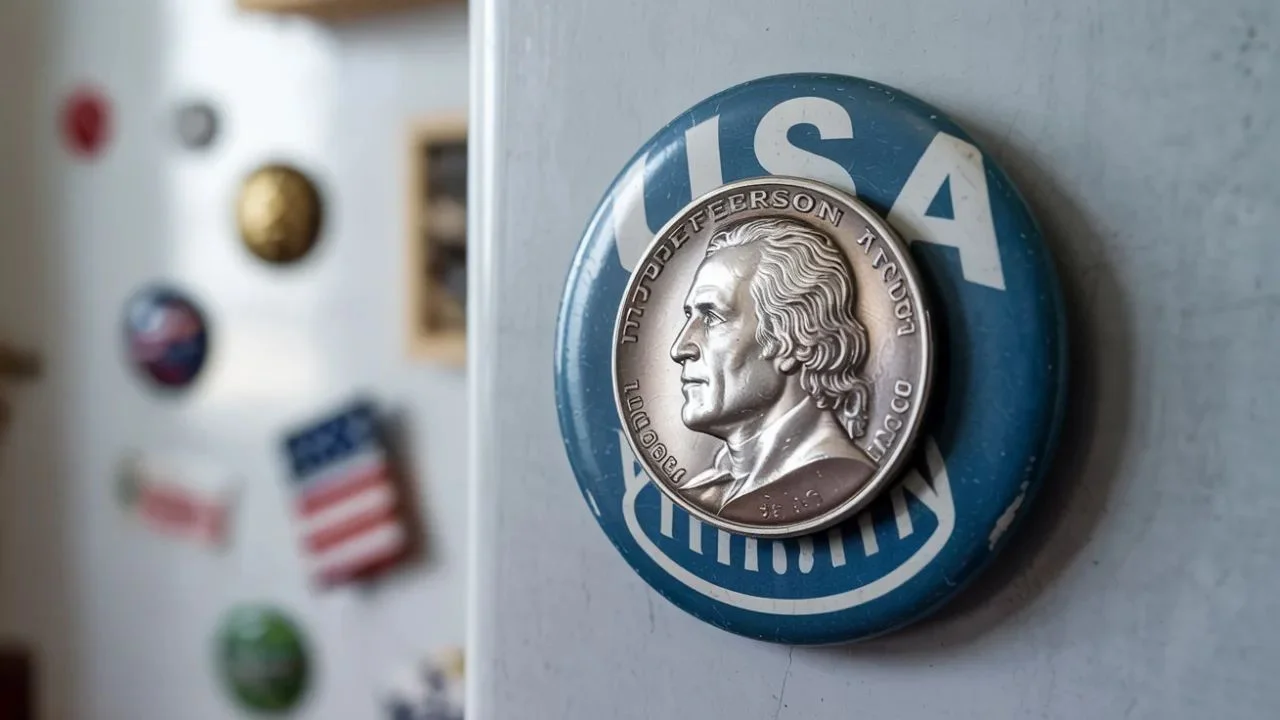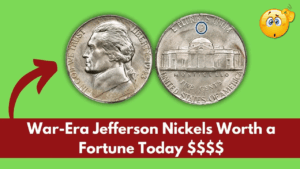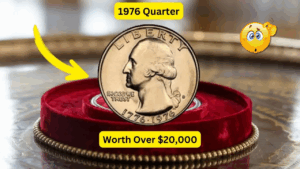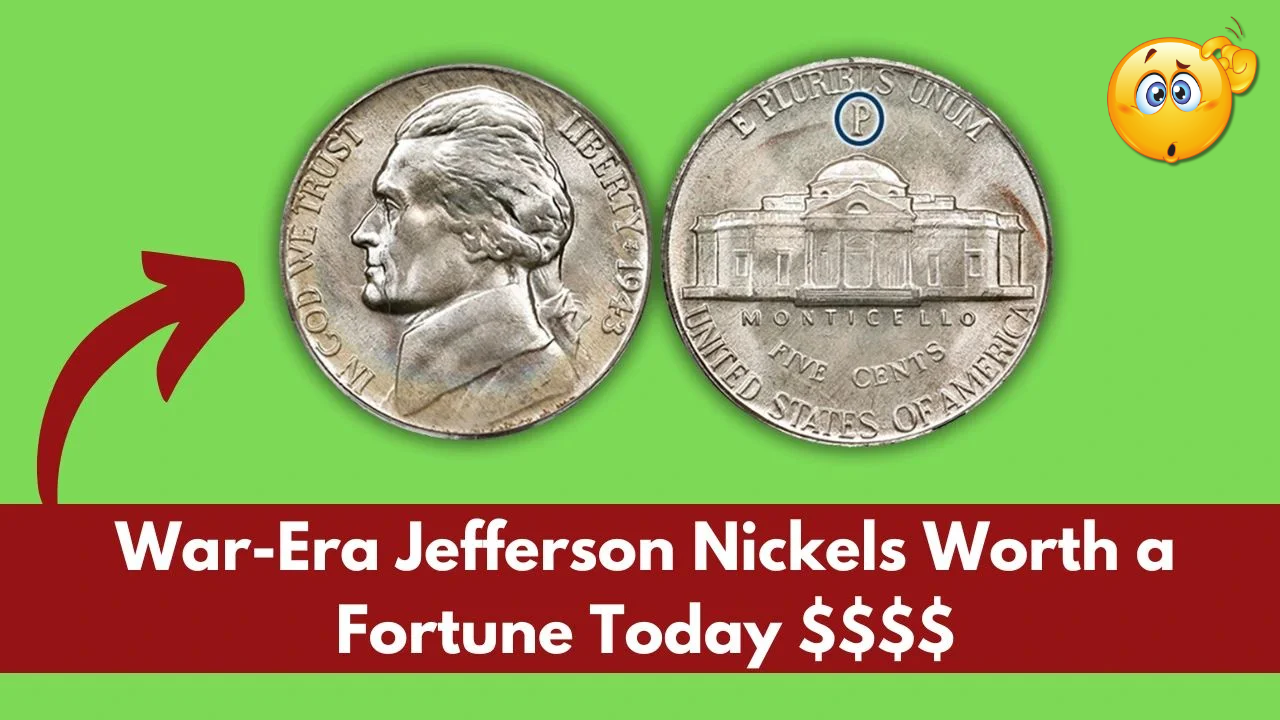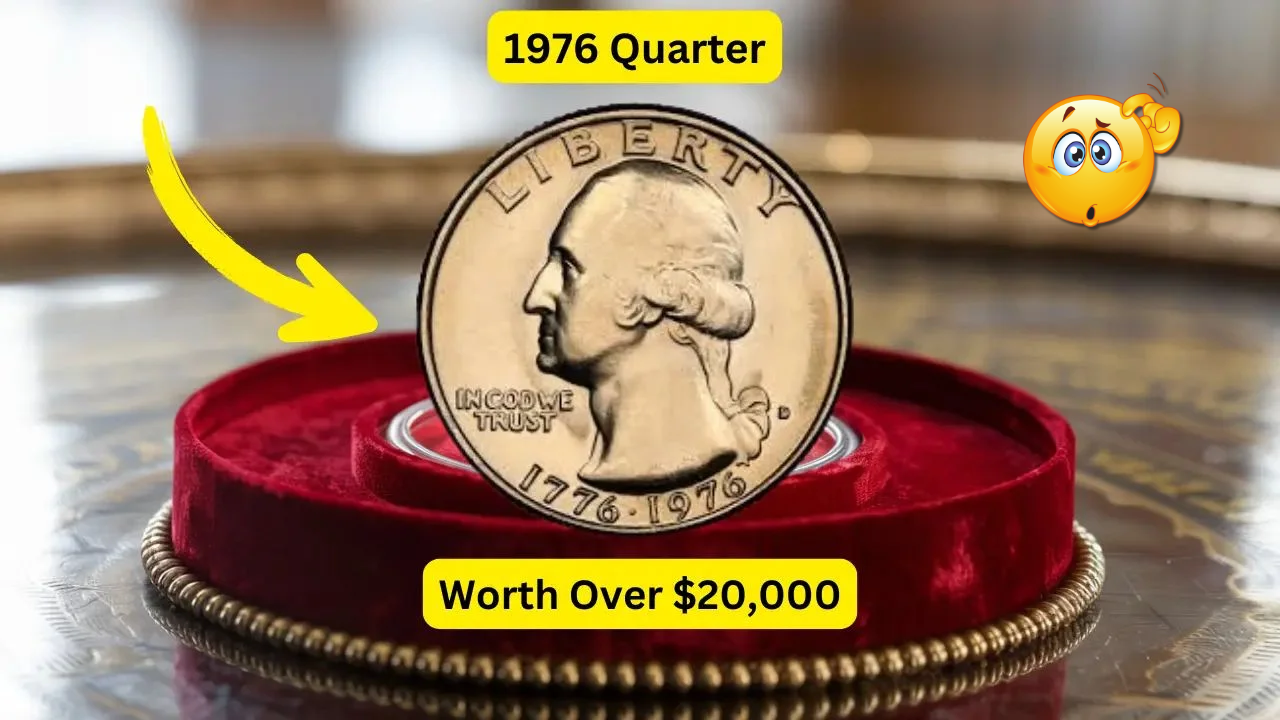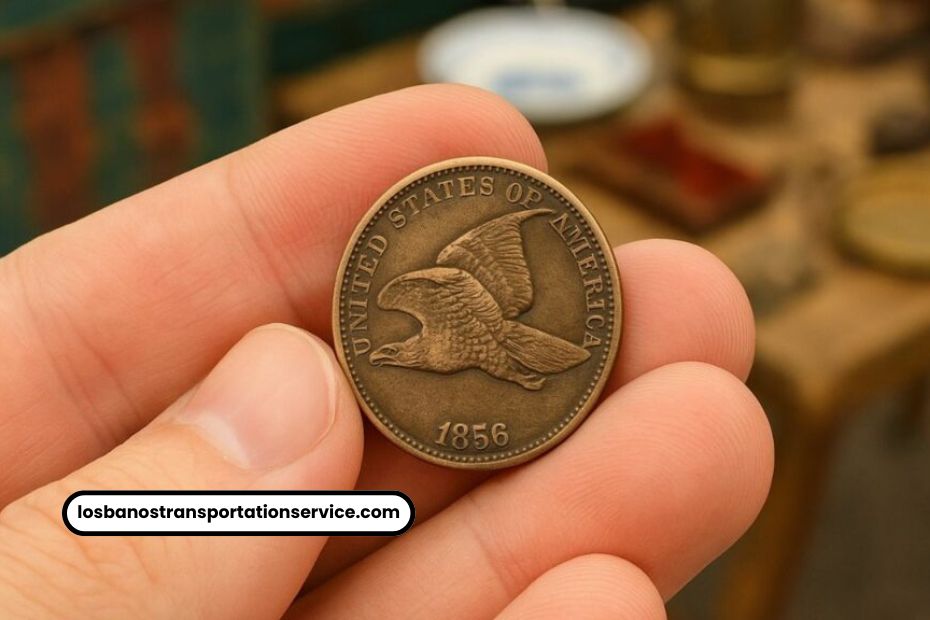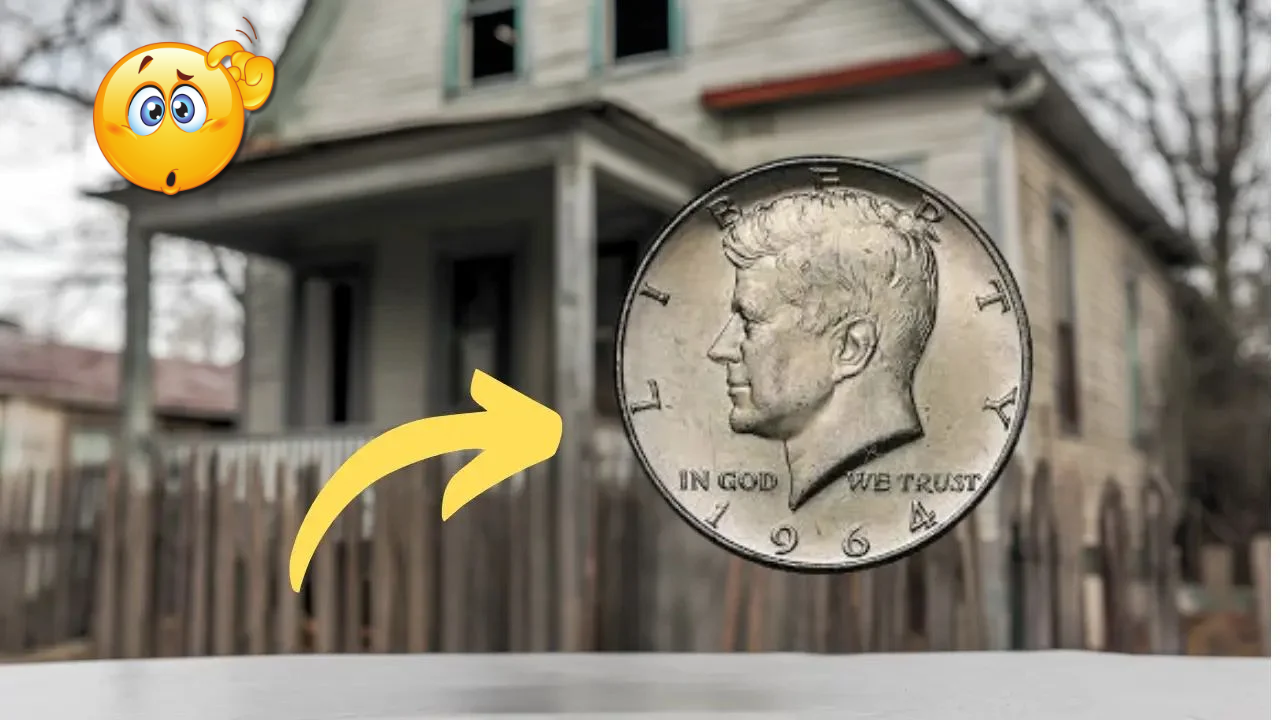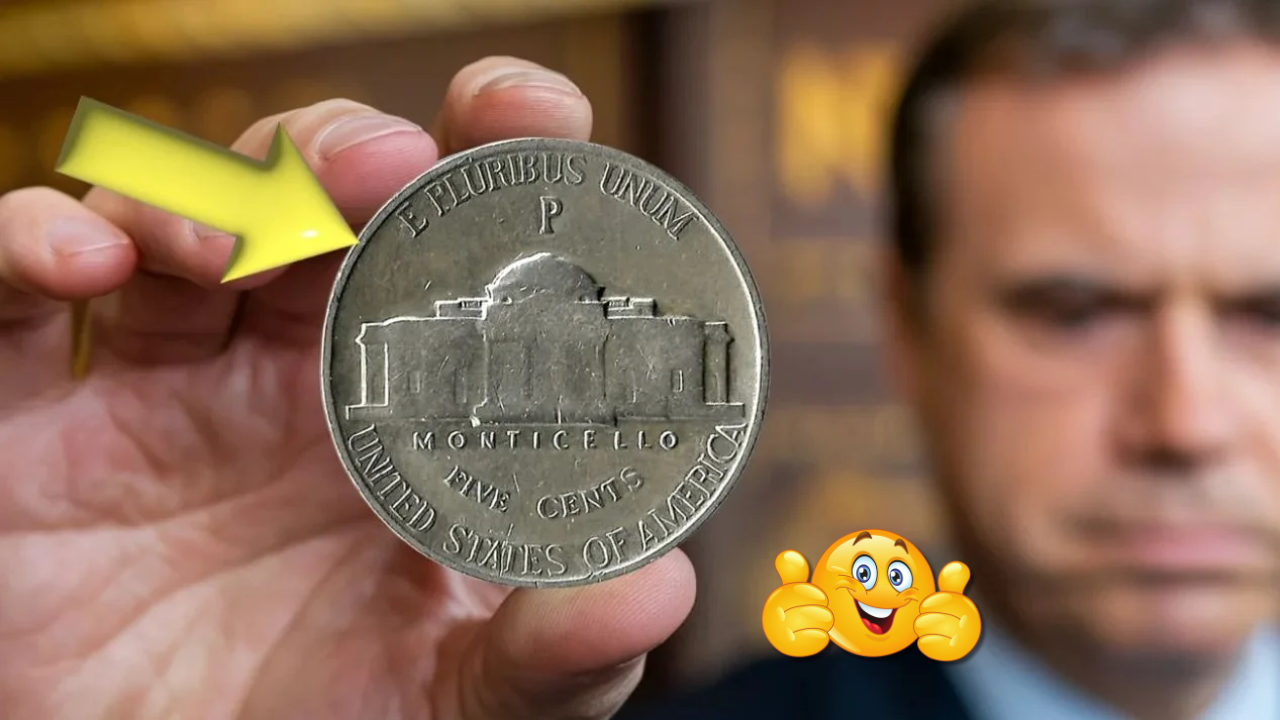What started as a routine kitchen cleanup turned into a once-in-a-lifetime discovery when a 1942 Jefferson nickel, long used as a fridge magnet, revealed itself to be a rare mint error potentially worth thousands. For years, it clung unassumingly to a refrigerator, holding up grocery lists and reminders—until its unexpected magnetic behavior raised a red flag and unraveled an incredible numismatic mystery.
Why a 1942 Nickel Shouldn’t Be Magnetic
Most U.S. nickels, including those from 1942, are not supposed to stick to magnets. The standard alloy of 75% copper and 25% nickel is non-magnetic. However, in 1942, the U.S. Mint temporarily changed the composition to conserve nickel for wartime production. These “wartime nickels” were made of 56% copper, 35% silver, and 9% manganese—also non-magnetic.
So, when a 1942 nickel sticks to a magnet, it immediately raises questions. That’s exactly what happened in this case, prompting the homeowner to consult a coin expert.
The Rarity of Transitional Error Coins
The coin was identified as a transitional error—a rare mistake that occurs during periods when the U.S. Mint changes coin compositions or designs. In this case, a steel planchet (intended for other coins, possibly even foreign or experimental issues) was accidentally used to mint a Jefferson nickel.
Steel is magnetic, which explains the coin’s unusual behavior. These types of errors are exceedingly rare, especially from the WWII era when coin blanks were sometimes swapped or misused due to material shortages and rushed production timelines.
| Feature | Typical 1942 Nickel | Discovered Error Nickel |
|---|---|---|
| Composition | Copper-Nickel or Silver Mix | Steel (Transitional Error) |
| Magnetic | No | Yes |
| Known Rarity | Common | Extremely Rare |
| Estimated Value | Under $1 (standard) | $10,000+ (depending on condition) |
From Kitchen Utility to Auction Block
For years, this extraordinary coin served a purely functional role, holding up household notes. But its transformation from a utility item to a high-value collectible has captivated both coin enthusiasts and the general public. According to experts, coins with such provenance—being discovered by accident and carrying historical significance—often fetch higher prices due to their story and scarcity.
The Historical Context Adds Value
What makes this nickel even more fascinating is its connection to America’s WWII homefront efforts. The altered minting processes during that period reflected broader national priorities. This error coin is more than a collector’s item—it’s a tangible relic of a time when every ounce of metal was accounted for in support of the war.
A Reminder to Check Your Change
The story has sparked a wave of renewed interest in coin collecting, especially in hunting down wartime and error coins. Social media is abuzz with users posting their own finds, wondering if they might be sitting on a hidden treasure.
It’s a compelling reminder: rare finds can lurk in the most mundane places—sometimes stuck to your refrigerator.
Whether you’re a seasoned numismatist or someone with a loose change jar on the counter, stories like this show that small discoveries can lead to big surprises. This nickel, once lost in plain sight, is now a piece of American history that’s changing hands—and changing lives.
FAQs
What is a transitional error coin?
A transitional error occurs when a coin is struck on a planchet (blank) intended for a different metal or year due to production changes or errors at the mint.
Are all 1942 nickels valuable?
Not necessarily. Only specific types, such as wartime silver nickels or rare mint errors, have significant value.
Why was the coin magnetic?
Because it was mistakenly struck on a steel planchet, which is magnetic—unlike the standard materials used in 1942 nickels.
Can I find similar coins in circulation today?
It’s rare, but possible. While most valuable errors are pulled from circulation quickly, some go unnoticed for decades.
How can I tell if my coin is a mint error?
If your coin has unusual features (wrong metal, double images, misaligned design), consult a certified coin expert or numismatist.
